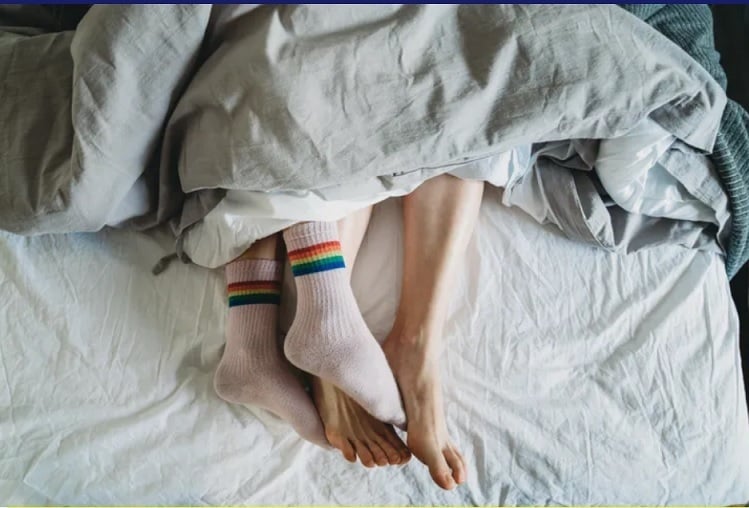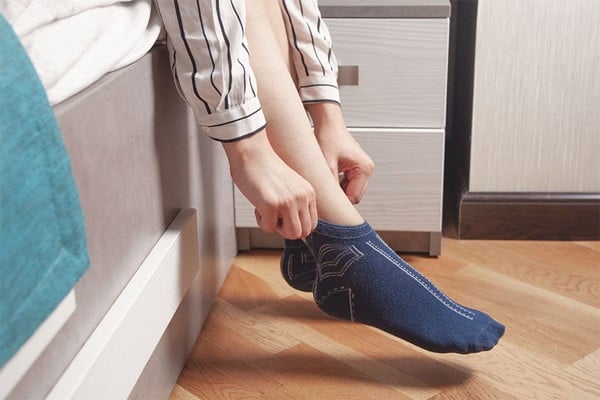In traditional medicine, cold is believed to be the root cause of many ailments, and cold starts from the feet. Hence, keeping them warm is essential to protecting your health.
Wearing socks to bed is akin to a gentle healing therapy. This practice stems from the idea of warming the feet, which are considered the endpoints of many vital meridians and acupoints in the body.
Numerous studies have indicated that cold feet can lead to poor blood circulation, reducing blood flow to vital organs and impacting the nervous and circulatory systems.

The Benefits of Wearing Socks to Bed
Improved Blood Circulation
Wearing socks in bed helps warm the feet, dilating blood vessels and improving blood and oxygen flow to vital organs. This supports the heart, lungs, and other organs, enhancing overall health, metabolic rate, and sleep quality.
Reduces Hot Flashes
Contrary to the belief that wearing socks increases body temperature, warming the feet actually helps regulate temperature and reduces the frequency of hot flashes in menopausal women.
Warming the feet dilates blood vessels and improves circulation. Stable blood flow allows the body to self-regulate temperature, preventing hormone imbalances that trigger hot flashes.
Moisturizes and Heals Cracked Heels
Cold, dry air can dehydrate the skin (especially during winter), leading to dry and cracked feet. After moisturizing your feet, wear socks to lock in moisture and promote softer skin while you sleep.
Relieves Raynaud’s Syndrome Symptoms
Raynaud’s syndrome is a condition that restricts blood flow to the fingers and toes, causing numbness, swelling, and pain. These episodes can be triggered by cold temperatures or stress.
Warming your feet at night by wearing socks helps dilate blood vessels, improving circulation and reducing symptoms like finger and toe numbness.

The Case for Sleeping Barefoot
The advantages of sleeping without socks are less clear. Research suggests that if an individual doesn’t experience temperature-related issues, sleeping barefoot might enhance comfort.
However, wearing socks for extended periods, especially if they’re too tight, can reduce blood flow and put strain on the circulatory system, potentially leading to high blood pressure and negative cardiovascular effects.
Additionally, wearing unclean socks to bed can hinder the natural breathing of the skin. Ill-fitting or dirty socks create an environment for bacterial growth and unpleasant odors.
Non-breathable or overly thick socks can cause overheating and discomfort. Elevated body temperatures can lead to restlessness and disruptions in circadian rhythms, impacting sleep quality.
Despite the benefits of wearing socks to bed, De Carlo notes that socks are not a cure-all. While they may aid sleep, it’s important to understand why your feet are frequently cold.
Choosing the Right Bedtime Socks
While wearing socks to bed offers several benefits, selecting the right type is crucial.
Not all socks are created equal. De Carlo recommends opting for clean, natural fiber socks made from materials like cashmere, merino wool, bamboo, or cotton. These fabrics provide warmth, breathability, and overall skin health.”
Avoid tight-fitting or synthetic socks that don’t wick away moisture, as these can irritate the skin and impact blood circulation.



































